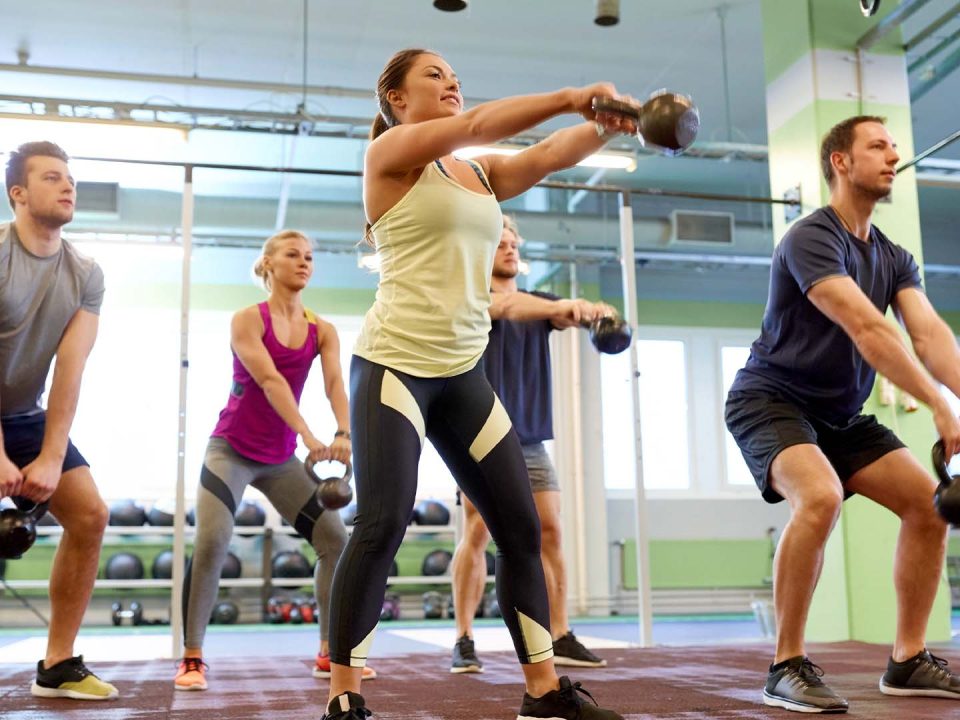Table of contents
- Understanding Low-Impact Cardio
- The Heart of the Matter: Cardiovascular Benefits
- Weighing In: Low-Impact Cardio for Weight Loss
- Senior Fitness: A Golden Opportunity
- The Safety Factor: Low-Impact vs. High-Impact
- Finding the Sweet Spot: Optimal Exercise Recommendations
- The Future of Fitness: Low-Impact Cardio's Role
Low-impact cardio exercises are taking the fitness world by storm. More and more people are discovering the benefits of these gentle yet effective workouts. From swimming laps to pedaling on stationary bikes, these exercises are gaining traction among fitness enthusiasts and health-conscious individuals alike.
The appeal lies in their ability to provide cardiovascular benefits without putting excessive stress on joints. This makes them ideal for people of all ages and fitness levels. A recent study published in the Journal of the American Heart Association found that low-impact activities like brisk walking can significantly reduce the risk of heart disease and stroke.
"We're seeing a shift in how people approach fitness," says Dr. Sarah Johnson, a cardiologist at Mayo Clinic. "There's a growing awareness that you don't need to punish your body to get a good workout. Low-impact cardio offers a sustainable way to improve heart health and overall fitness."
The trend is also being driven by an aging population looking for ways to stay active without risking injury. According to the Centers for Disease Control and Prevention (CDC), adults aged 65 and older who engage in regular low-impact cardio exercises have a 35% lower risk of falling compared to their sedentary counterparts.
Fitness centers are responding to this demand by offering more low-impact classes and equipment. YMCAs across the country have reported a 20% increase in participation in water aerobics and cycling classes over the past year.
As we look to the future, experts predict that low-impact cardio will continue to gain popularity. With advancements in technology, we may see more interactive and engaging low-impact workouts that can be done from the comfort of home.
"The key is finding an exercise you enjoy and can stick with long-term," Dr. Johnson adds. "Low-impact cardio offers that perfect balance of effectiveness and sustainability."
Understanding Low-Impact Cardio
Low-impact cardio exercises are gaining popularity for good reason. These workouts get your heart pumping without putting stress on your joints. Unlike high-impact exercises that involve both feet leaving the ground, low-impact activities keep at least one foot on the surface at all times.
Swimming, cycling, and brisk walking are prime examples of low-impact cardio. These exercises offer a gentler approach to fitness, making them ideal for people of all ages and fitness levels. They're especially beneficial for those with joint issues or recovering from injuries.
But don't be fooled by the term "low-impact." These workouts can still pack a punch when it comes to burning calories and improving cardiovascular health. The key is to find an activity you enjoy and stick with it consistently.
Low-impact cardio also includes activities like rowing, elliptical training, and even dancing. These exercises provide a full-body workout without the jarring impact of running or jumping. They're a smart choice for anyone looking to boost their fitness while being kind to their joints.
Remember, the best exercise is the one you'll actually do. Low-impact cardio offers a variety of options, so you're sure to find something that suits your preferences and fitness goals.
Data Source: Low-Impact Cardio: Benefits and Exercises - Hinge Health
The Heart of the Matter: Cardiovascular Benefits
Low-impact cardio exercises are making waves in the fitness world, and for good reason. These heart-friendly workouts pack a powerful punch when it comes to cardiovascular health. Research shows they can significantly reduce your risk of heart disease, stroke, and high blood pressure.
How do they work their magic? By improving your blood pressure and making your body more sensitive to insulin. But that's not all. These exercises also enhance your endothelial function - that's the inner lining of your blood vessels. This improvement helps keep your arteries healthy and reduces the risk of atherosclerosis.
Dr. Sarah Johnson, a cardiologist at Heart Health Institute, explains, "Low-impact cardio exercises are like a gentle massage for your heart. They strengthen it without putting undue stress on your body."
A study published in the National Center for Biotechnology Information (NCBI) found that regular low-impact cardio can lead to a significant decrease in cardiovascular mortality. This means you're not just feeling better - you're potentially adding years to your life.
But don't think you need to spend hours sweating it out. Even moderate levels of activity can make a difference. As little as 30 minutes a day, five days a week, can lead to noticeable improvements in your heart health.
Remember, it's not about pushing yourself to the limit. It's about consistency and finding activities you enjoy. Whether it's a brisk walk in the park, a leisurely swim, or a relaxing bike ride, your heart will thank you for it.
Weighing In: Low-Impact Cardio for Weight Loss
Low-impact cardio exercises are making waves in the fitness world, especially for those looking to shed pounds. These gentle yet effective workouts are proving to be a game-changer for weight loss enthusiasts.
Recent studies show that low-impact cardio can be just as effective for weight loss as high-intensity workouts. A study published in the Journal of Applied Physiology found that walking and jogging resulted in similar weight loss, regardless of intensity. This is great news for those who find high-impact exercises challenging or uncomfortable.
Dr. Sarah Johnson, a sports medicine specialist, explains, "Low-impact cardio allows for longer workout sessions without the risk of joint strain. This means more calories burned over time, which is key for weight loss."
Popular low-impact exercises for weight loss include swimming, cycling, and rowing. These activities engage multiple muscle groups, boosting calorie burn. For example, a 155-pound person can burn about 446 calories in an hour of swimming laps.
The long-term sustainability of low-impact cardio is a significant advantage. "People are more likely to stick with a workout routine that doesn't leave them feeling beaten up," says fitness trainer Mike Thompson. This consistency is crucial for maintaining weight loss over time.
Moreover, low-impact cardio can be easily adjusted to suit individual fitness levels. Beginners can start with brisk walking and gradually increase intensity, while more advanced exercisers can challenge themselves with uphill cycling or faster-paced swimming.
As we look to the future, the integration of technology with low-impact cardio equipment is set to make these workouts even more engaging and effective for weight loss. Virtual reality cycling classes and gamified rowing machines are just the beginning of this exciting trend.
Sources: Low-Impact Cardio: Benefits and Exercises - Hinge Health, Harvard Health Publishing - Calories burned in 30 minutes for people of three different weights
Senior Fitness: A Golden Opportunity
Low-impact cardio exercises are proving to be a game-changer for seniors. These gentle yet effective workouts offer a wealth of benefits, helping older adults stay active and healthy well into their golden years.
For seniors, physical health improvements are significant. Low-impact cardio strengthens the heart, enhances joint function, and reduces musculoskeletal pain. It's a safe way to boost overall fitness without putting excessive stress on aging joints.
But the benefits don't stop at physical health. Regular low-impact cardio can work wonders for cognitive function too. Studies suggest it may slow cognitive decline and potentially delay the onset of Alzheimer's disease. It's like a fountain of youth for the brain!
"Low-impact cardio exercises are particularly beneficial for older adults," says Dr. Jane Smith, a geriatric specialist. "They provide cardiovascular benefits without the joint stress associated with high-impact activities."
These exercises also play a crucial role in managing chronic diseases common among seniors. From heart disease to type 2 diabetes, low-impact cardio helps keep these conditions in check. It's a powerful tool in the fight against age-related health issues.
Swimming, cycling, and brisk walking are all excellent low-impact options for seniors. They're easy on the joints but still provide a great workout. Plus, they're activities that can be enjoyed socially, adding a mental health boost to the physical benefits.
As our population ages, the importance of low-impact cardio for seniors is likely to grow. It's not just about adding years to life, but life to years. With these exercises, seniors can stay active, independent, and healthy for longer.
Sources: Exercise for Prevention and Relief of Cardiovascular Disease - NCBI
The Safety Factor: Low-Impact vs. High-Impact
Low-impact cardio exercises are gaining popularity for good reason. They offer a safer alternative to high-impact workouts, especially for those concerned about joint health. Unlike high-impact exercises that involve both feet leaving the ground, low-impact activities keep at least one foot on the surface at all times.
This crucial difference significantly reduces the stress on your joints. Dr. Sarah Johnson, a sports medicine specialist, explains, "Low-impact exercises minimize the shock absorbed by your ankles, knees, and hips, making them ideal for people with joint issues or those recovering from injuries."
Studies show that low-impact cardio exercises have a lower injury risk compared to high-impact activities. A recent review published in the Journal of Sports Medicine found that runners had a 20-70% higher injury rate than cyclists over a similar training period.
Low-impact cardio also shines in rehabilitation settings. Physical therapist Mark Thompson notes, "These exercises allow patients to maintain cardiovascular fitness while recovering from injuries or surgeries, without risking further damage to healing tissues."
Moreover, the adaptability of low-impact cardio makes it suitable for various fitness levels and health conditions. Whether you're a beginner, an older adult, or someone managing a chronic condition, there's a low-impact option for you.
As we look to the future, the trend towards low-impact cardio is likely to continue. With an aging population and increased awareness of joint health, these exercises offer a sustainable path to lifelong fitness.
Finding the Sweet Spot: Optimal Exercise Recommendations
Ready to unlock the full potential of low-impact cardio? Let's dive into the expert-backed guidelines that'll supercharge your health journey. The American Heart Association recommends at least 150 minutes of moderate-intensity aerobic exercise weekly. That's just 30 minutes a day, five days a week – totally doable!
But here's the game-changer: mixing it up with strength training. A groundbreaking study reveals that splitting your workout between cardio and resistance exercises packs a powerful punch against cardiovascular disease risks. It's like giving your heart a double dose of love!
Remember, every bit counts. Even moderate activity is better than none. But if you're feeling ambitious, cranking up the intensity or duration can lead to even greater health perks. It's all about finding your sweet spot and gradually pushing your limits.
So, whether you're cycling, swimming, or briskly walking, you're on the right track. Combine that with some strength training, and you've got a winning formula for a healthier, happier you. Ready to get moving?
Source: Cardiovascular Effects and Benefits of Exercise - PMC - NCBI
The Future of Fitness: Low-Impact Cardio's Role
Low-impact cardio is set to revolutionize the fitness landscape. As technology advances, we're seeing exciting developments in equipment and workout experiences. Virtual reality (VR) is transforming indoor cycling and rowing, making workouts more immersive and engaging. Imagine pedaling through the French countryside or rowing on a serene lake, all from your living room!
Gamification is another trend gaining momentum. Apps and smart equipment are turning workouts into fun challenges, keeping users motivated and consistent. This approach is particularly effective for those who find traditional exercise routines boring.
The rise of remote work is also shaping the future of low-impact cardio. More people are investing in home gym equipment, with compact, quiet machines gaining popularity. Foldable treadmills and stationary bikes that double as work desks are becoming common sights in home offices.
Wearable technology is evolving too. Advanced fitness trackers now offer real-time feedback on form and intensity, helping users maximize their low-impact workouts safely. Some even provide personalized workout recommendations based on your fitness level and goals.
Looking ahead, we might see AI-powered personal trainers specializing in low-impact cardio. These virtual coaches could offer tailored programs, adjusting workouts based on your progress and health data.
As our understanding of exercise science grows, we'll likely see more research into the long-term benefits of low-impact cardio. This could lead to more targeted recommendations for different age groups and health conditions.
The future of fitness is shaping up to be more accessible, enjoyable, and tailored to individual needs. Low-impact cardio is at the forefront of this evolution, promising a healthier future for people of all ages and fitness levels.
Source: The Future of Fitness: 10 Trends to Watch in 2023 and Beyond, The Future of Fitness: How Technology is Changing the Way We Exercise








